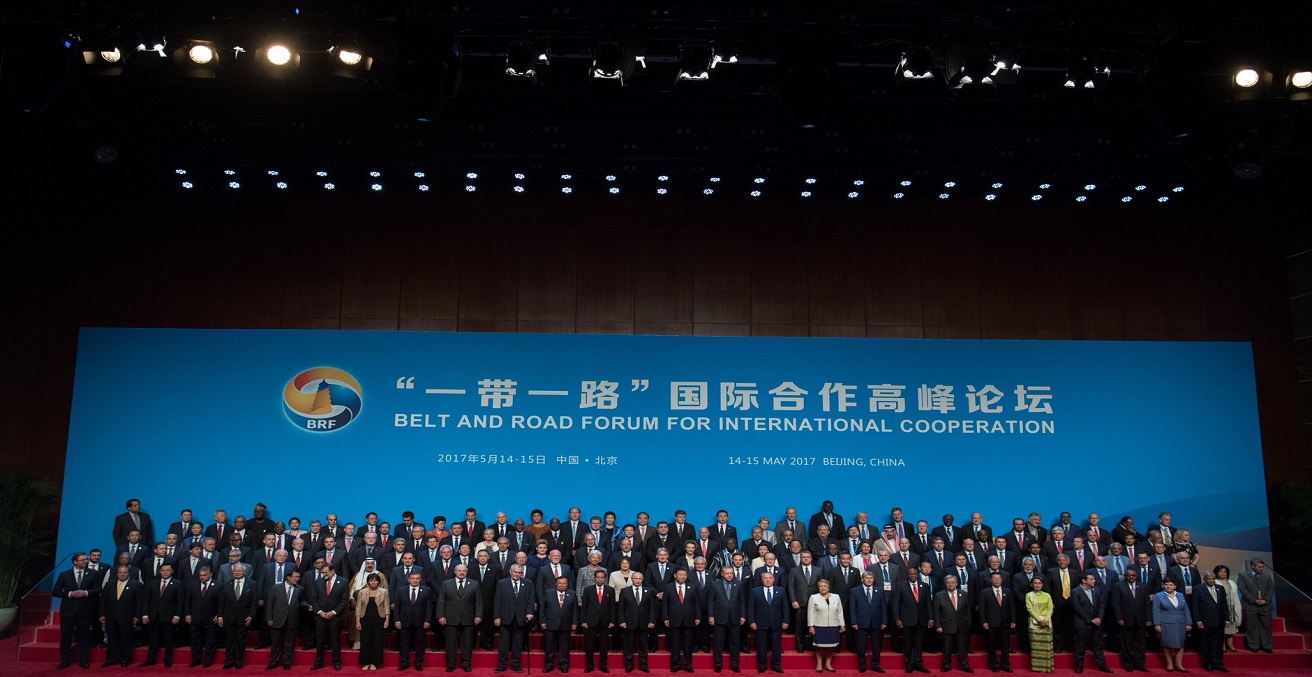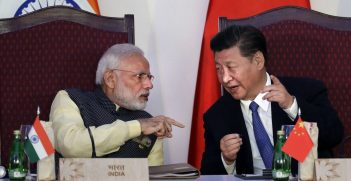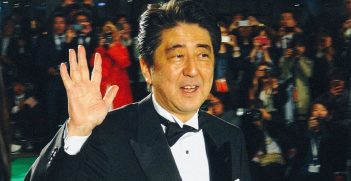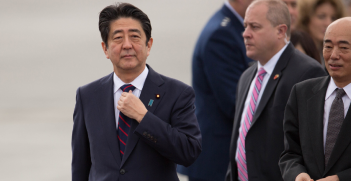Not-So-New Silk Roads: Japan’s Foreign Policies on Asian Connectivity Infrastructure Under the Radar

CAREC may have a little known history as a prototype for the Belt and Road Initiative.
The Central Asia Regional Economic Cooperation Program (CAREC) was inspired by the Asian Development Bank’s (ADB) GMS programme of connectivity and cooperation in SEA and followed by South Asia Sub-regional Economic Cooperation programme (SASEC). The improvement of regional connectivity via the formation and construction of international transport corridors was a central feature of these programmes, aside from trade and investment promotion. CAREC projects are functionalist: although not expressly promoting regional integration or trade with the projects’ sponsor (unlike the Belt and Road Initiative, BRI), they seek to remove existing bottlenecks by focusing on field specific (customs, transport, trade etc.) technical regional cooperation among landlocked developing states with poor interconnectedness, facilitating its access to seas and international trade routes.
CAREC demonstrated impressive progress between 1997 and mid-2010s, evolving from the initial idea of improving regional cooperation between China, Kazakhstan, Kyrgyzstan, and Uzbekistan (ADB 1998) to six fully-fledged connectivity corridors among ten countries. The similarities between CAREC and more recent BRI disprove the interpretation of Japan’s recent infrastructural initiatives as purely catching up with China.
It was during Tadao Chino’s ADB presidency that Chinese officials became the bank’s vice presidents for the first time and started covering South, Central and West Asia, including CAREC. Appointments at that level suggest that the ADB’s Japanese leadership accommodated China’s increasing involvement in Central Asian (CA) and South Asian (SA) projects, rather than opposing it. Since the VP office’s establishment in 2003, it has been continuously held by Chinese officials for over 15 years. Jin Liqun, the first such vice president (2003–08), later became the AIIB’s inaugural president. Jin’s successor was Zhao Xiaoyu (2008–13), who subsequently became Vice President of the China Development Bank (CDB)—a key BRI funding body. From 2013 onward Zhang Wencai has held the ADB’s VP office. Prior to 2003, the ADB had no Chinese vice presidents. It would be hard to imagine this appointment policy without top-level support of Japanese officials, in particular ADB presidents Chino, Haruhiko Kuroda and Takehiko Nakao. In other words, several years after the ADB’s connectivity projects in CA, senior Chinese officials had directly managed these projects in the decade preceding the BRI’s launch before they went on to lead the AIIB and CDB.
Furthermore, scholarship suggests that the establishment of dedicated Asian infrastructure institutions was discussed within the ASEAN Plus Three forum and the Tokyo-based ADB Institute (ADBI) in the late 2000s-early 2010s. Kawai proposed to create a similar infrastructure investment fund, but with a narrower, Northeast Asian, focus (NEAIIF) and argued against the creation of a new multilateral development bank due to supposed lack of resolve in the U.S., Japan and Europe. Although these proposals did not materialise, they showed that the ADB’s officials mulled an institutional design similar to the AIIB several years before the BRI and AIIB’s launch.
Therefore, Japan-led ADB was the first Asian multilateral development bank to promote connectivity within and between Asian sub-regions. Whilst considering CAREC as part of the renewed Silk Road, neither Japan’s official rhetoric, nor Japanese developmentalists directly claimed its “ownership”, which stood in contrast to the NSR projects furthered by Washington or Beijing. And yet, both diplomatically and financially, CAREC reflected a “win-win” approach. For Japan, a key player behind the ADB and CAREC, it struck an optimal balance between the idealist and pragmatic postures of Tokyo’s diplomacy. The diversification of transport via CAREC sought to reduce CA’s dependence on great powers, as the project included the development of southbound routes connecting the region with Indian Ocean to provide an additional outlet to Russia- and China-dominated itineraries. In parallel, it engaged China and, indirectly, Russia, as stakeholders without entailing their backlash, thus avoiding a “zero-sum game” animosity.
In addition, although Japanese officials played a key role in CAREC by virtue of their weight in the ADB, the funds used for the project came from various—not solely Japanese —sources, including participant governments and international institutions. This diversification of capital sources resulted in a more affordable risk profile for Japan than purely bilateral assistance, the budget for which was cut several times by Tokyo throughout the 2000s. Consequently, Japanese International Cooperation Agency (JICA) became a close partner of CAREC, as it complemented JICA’s limited resources.
Although Japan criticised the BRI’s potential dual-use for strategic purposes, certain CAREC-related projects also featured a security aspect at some instances. The aftermath of 9/11 brought an element of securitisation to Japanese aid to CA, as Prime Minister Koizumi Jun’ichirō decided to “share the burden” of the NATO-led operation in Afghanistan, and Japanese aid helped finance strategic transport links. During that period JICA officials found it easier to obtain aid approvals for CA if the proposals were related to Afghan security. In Uzbekistan, for instance, the Japanese Bank for International Cooperation (JBIC), JICA and the ADB financed the Tashkent-Termez railway (a part of CAREC’s Corridor 6). Another Afghanistan-bound connection that Japan built and financed in CA was the Nizhny Pyandzh-Dousti road in Tajikistan. These policies were in line with the coupling of CA and SA by the U.S. Department of State that established a dedicated bureau of South and Central Asian Affairs in 2006. In the 2006 Central Asia Plus Japan dialogue (CAJ) Action Plan, CA countries “recognized the importance of improving transport routes from Central Asia to the south through Afghanistan for the development and prosperity of their landlocked region” and promoted “the enhancement of regional transport networks within the framework of CAREC” in this regard.
Unlike steadily growing multilateral infrastructure finance, Japan’s bilateral aid to CA ebbed and flowed. It started with an earlier “euphoria” stage, which had brought Japan to the rank of top donors. After the post 9/11 securitisation, bilateral aid disbursement to CA plateaued in the late 2000s due to the improved financial standings of CA states, change of regional strategies of Japanese companies, foreign policy changes of various Japanese cabinets and also due to a temporary realignment in the overall Japan-CA relationship, following the rise of the Shanghai Cooperation Organisation (SCO). During Abe’s first premiership, MOFA promoted the concept of value oriented diplomacy that included support to democratisation in CA and SEA. This idea, manifested in the Arc of Freedom and Prosperity concept, attempted a departure from mercantilism and drew suspicions in Beijing and Moscow, but ultimately turned out short-lived. Despite these ebbs and flows, Japan’s aid created an important legacy in its CA policy and later served as a foundation for further relationship-building, reshaped during Abe Shinzō’s second premiership.
Dr Nikolay Murashkin is a Visiting Fellow at Griffith Asia Institute.
This article is an extract from Nikolay Murashkin’s article in Volume 72, Issue 5 of the Australian Journal of International Affairs titled ‘Not-So-New Silk Roads: Japan’s Foreign Policies on Asian Connectivity Infrastructure Under the Radar‘. It is republished with permission.





